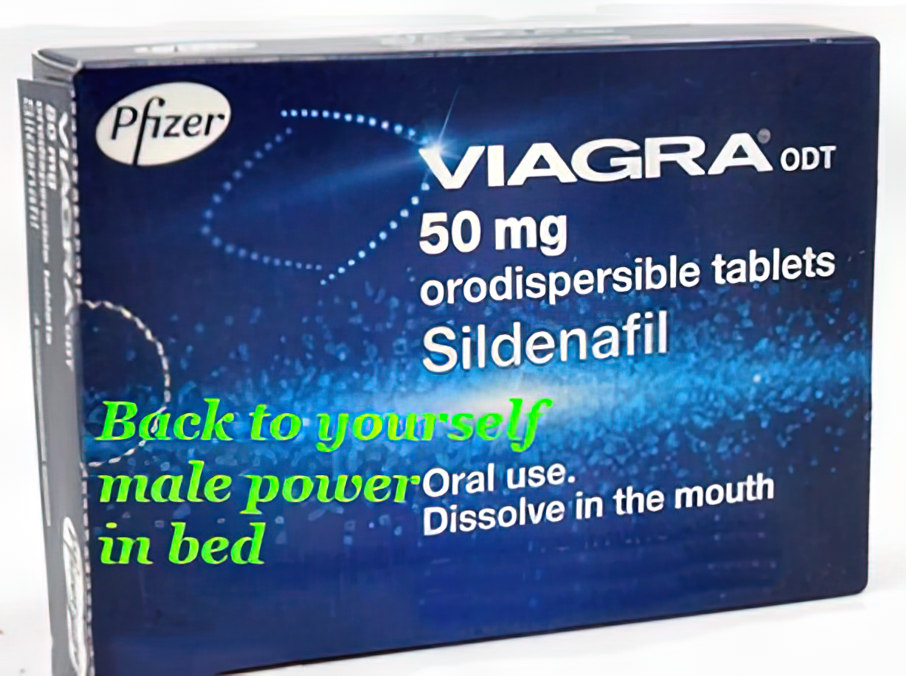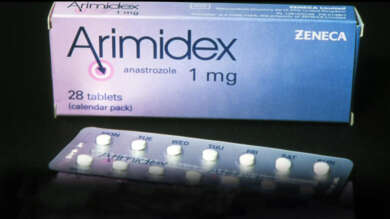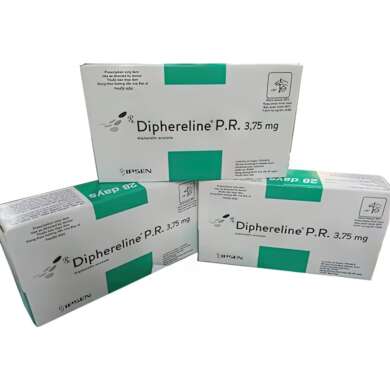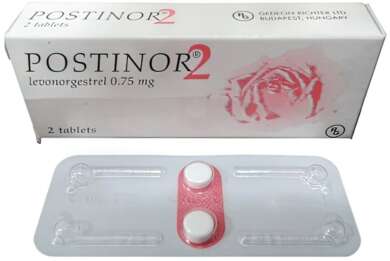Description
Buy Viagra Sildenafil Orally Disintegrating Tablets (ODT) 50mg #2
Description of Viagra Sildenafil ODT 50mg:
Initially developed for the treatment of pulmonary hypertension, angina, and other cardiovascular conditions, sildenafil citrate was accidentally found to be beneficial in males who suffered from erectile dysfunction (ED). Prior to the discovery of its benefits in treating ED, this condition was considered to be an inevitable part of aging in men or due to underlying psychological causes. After its approval in 1998 by the U.S. Food and Drug Administration for the treatment of ED, the popularity of sildenafil citrate has skyrocketed over the past couple of decades as health care providers generally recommend this medication as the first-line therapy in the management of erectile dysfunction in men. Other contributing factors to its appeal and popularity is that sildenafil citrate can be taken orally on demand, is generally well tolerated, with minimal adverse effects.
Ingredients of Viagra Sildenafil ODT 50mg:
Active substance: Sildenafil Citrate
Excipients: ludiflesh (mannitol (E421), crospovidone, polyvinyl acetate, povidone), croscarmellose sodium, microcrystalline cellulose, hydrophobic silicon dioxide, sacralose (E955), indigo carmine aluminum varnish 30-36% (E132), sweet taste enhancer, special natural component, lemon flavor , magnesium stearate..
Pharmacologial Properties of Viagra Sildenafil ODT 50mg:
Pharmacodynamic:
Mechanism of action. Sildenafil is an oral drug that is indicated for the treatment of erectile dysfunction. During sexual arousal, the drug renews reduced erectile function by increasing blood flow to the penis.
The physiological mechanism of penile erection is the release of nitric oxide (NO) in the corpus cavernosum upon sexual stimulation. The released nitric oxide activates the enzyme guanylate cyclase, which stimulates an increase in cGMP levels, which in turn causes the smooth muscles of the corpus cavernosum to relax, promoting increased blood flow.
Sildenafil is a potent and selective inhibitor of cGMP-specific phosphodiesterase-5 (PDE5) in the corpus cavernosum, where PDE5 is responsible for the breakdown of cGMP. The effects of sildenafil on erection are peripheral. Sildenafil does not have a direct relaxing effect on the isolated human corpus cavernosum, but powerfully enhances the relaxing effect of NO on this tissue. When the NO/cGMP metabolic pathway is activated, which occurs during sexual stimulation, inhibition of PDE5 by sildenafil leads to an increase in cGMP levels in the corpus cavernosum. Thus, in order for sildenafil to cause the necessary pharmacological effect, sexual arousal is necessary.
Effect on pharmacodynamics:
In vitro studies have demonstrated the selectivity of the effect of sildenafil on PDE-5, which is actively involved in the erection process. The effect of sildenafil on PDE-5 is more powerful than on other known PDEs. This effect is 10 times more powerful than the effect on PDE-6, which is involved in phototransformation processes in the retina. When using the maximum recommended doses, the selectivity of sildenafil to PDE-5 is 80 times higher than its selectivity to PDE-1, 700 times higher than to PDE-2, PDE-3, PDE-4, PDE-7, PDE-8, PDE -9, PDE-10 and PDE-11. In particular, the selectivity of sildenafil for PDE-5 is 4000 times greater than its selectivity for PDE-3, the cGMP-specific isoform of PDE, which is involved in the regulation of heart contractions.
Pharmacokinetic:
Absorption. Sildenafil is rapidly absorbed. Cmax of the drug in blood plasma is achieved within 30–120 minutes (with a median of 60 minutes) after its oral administration on an empty stomach. The average absolute bioavailability after oral administration is 41% (range 25–63%). Over the recommended dose range (25–100 mg), the AUC and Cmax of sildenafil following oral administration increase in a dose-proportional manner.
When sildenafil is administered with food, the extent of absorption is reduced with a mean prolongation of Tmax of up to 60 min and a mean decrease in Cmax of 29%.
Distribution. The mean steady-state volume of distribution (Vd) is 105 L, indicating the distribution of the drug in body tissues. After a single oral dose of sildenafil 100 mg, the average Cmax of sildenafil is approximately 440 ng/ml (coefficient of variation is 40%). Since the binding of sildenafil and its main N-desmethyl metabolite to plasma proteins reaches 96%, the average Cmax of free sildenafil reaches 18 ng/ml (38 nmol). The degree of binding to plasma proteins does not depend on the total concentrations of sildenafil.
In healthy volunteers who used a single dose of sildenafil 100 mg, <0.0002% (on average 188 ng) of the administered dose was detected in the ejaculate after 90 minutes.
Biotransformation. The metabolism of sildenafil is carried out mainly with the participation of microsomal liver isoenzymes CYP 3A4 (major pathway) and CYP 2C9 (minor pathway). The main circulating metabolite is formed by N-demethylation of sildenafil. The selectivity of the metabolite towards PDE-5 is comparable to the selectivity of sildenafil, and the activity of the metabolite towards PDE-5 is approximately 50% of the activity of the parent substance. Plasma concentrations of this metabolite are approximately 40% of sildenafil plasma concentrations. The N-demethylated metabolite undergoes further metabolism and has a half-life of approximately 4 hours.
Elimination. The total clearance of sildenafil is 41 l/h, predetermining a half-life of 3–5 hours. Both after oral and intravenous administration, excretion of sildenafil in the form of metabolites occurs mainly in the feces (about 80% of the administered oral dose) and to a lesser extent degree – with urine (about 13% of the administered oral dose).
Pharmacokinetics in special patient groups
Elderly patients. In healthy elderly volunteers (≥65 years of age), there was a decrease in the clearance of sildenafil, which resulted in an increase in plasma concentrations of sildenafil and its active N-demethylated metabolite by approximately 90% compared with the corresponding concentrations in healthy younger volunteers (18–45 years). . Due to age-related differences in plasma protein binding, the corresponding increase in plasma concentrations of free sildenafil was approximately 40%.
Kidney failure. In volunteers with mild to moderate renal impairment (creatinine clearance 30–80 mL/min), the pharmacokinetics of sildenafil remained unchanged after a single oral dose of 50 mg. The mean AUC and Cmax of the N-demethylated metabolite increased by 126 and 73%, respectively, compared with those in age-matched volunteers without renal impairment. However, due to high interindividual variability, these differences were not statistically significant. In volunteers with severe renal impairment (creatinine clearance <30 mL/min), sildenafil clearance was decreased, resulting in mean increases in AUC and Cmax of 100% and 88%, respectively, compared with age-matched volunteers without renal impairment. In addition, the AUC and Cmax values of the N-demethylated metabolite were significantly increased by 200 and 79%, respectively.
Liver failure. In volunteers with mild to moderate liver cirrhosis (Child-Pugh classes A and B), the clearance of sildenafil was reduced, resulting in an increase in AUC (84%) and Cmax (47%) compared to age-matched volunteers without liver dysfunction . The pharmacokinetics of sildenafil in patients with severe liver dysfunction has not been studied.
Indication of Viagra Sildenafil ODT 50mg:
Viagra is recommended for use by men with erectile dysfunction, which is defined as the inability to achieve or maintain the penile erection necessary for successful sexual intercourse.
For Viagra to work effectively, sexual arousal is necessary.
Contraindications of Viagra Sildenafil ODT 50mg:
There are certain conditions under which sildenafil citrate should be administered with caution or outright avoided. Some of these conditions are:
- Hypersensitivity: Sildenafil is absolutely contraindicated in individuals who have a demonstrated hypersensitivity to the drug or any of its components;
- Nitrate therapy: Individuals who are not nitrate therapy should not be administered sildenafil citrate. Nitrates are potent vasodilators typically used in the management of cardiac conditions such as angina pectoris. Since sildenafil also a vasodilatory effect through its actions on cGMP, it can potentiate the effects of nitrates when used concurrently which may result in severe hypotension, syncope, and myocardial infarction;
- Hepatic disease: Since sildenafil is metabolized by hepatic isozymes, hepatic diseases may lead to increased plasma levels of sildenafil and a prolongation of its effects. Care should be exercised when administering sildenafil to individuals with hepatic disease;
- Renal disease: Similar to hepatic diseases, renal diseases may prolong the effects of sildenafil citrate due to increased plasma levels as a result of diminished renal excretion. Caution should also be exercised when administering sildenafil to individuals with renal diseases;
- Visual abnormalities: There have been some instances of vision loss in individuals taking sildenafil citrate. The loss of vision is due to a reduction in blood flow to the optic nerve, a condition known as non-arteritic anterior ischemic optic neuropathy (NAION). Individuals with pre-existing visual disturbances may be administered sildenafil only when the benefits clearly outweigh the risks;
- Cardiovascular disorders: Caution should be exercised when administering sildenafil to individuals with known cardiac disorders such as arrhythmias, aortic stenosis, heart failure, and myocardial infarction, among others.
Interaction with other medicinal products:
The metabolism of levonorgestrel is activated by the simultaneous use of drugs that are inducers of liver enzymes, mainly inducers of the CYP 3A4 enzyme system. When coadministered with efavirenz, a decrease in levonorgestrel plasma levels (AUC) of approximately 50% was observed. Drugs that are believed to have the ability to reduce plasma levels of levonorgestrel include barbiturates (including primidone), phenytoin, carbamazepine, herbal preparations containing St. John’s Wort (Hypericum perforatum St. John’s Wort), rifampicin, ritonavir, rifabutin, griseofulvin. Women who have been taking medications that are inducers of liver microsomal enzymes over the past 4 weeks should consider using a non-hormonal emergency contraceptive (eg, a copper IUD) if emergency contraception is necessary. Taking double-dose levonorgestrel (eg, 3000 mcg levonorgestrel within 72 hours of unprotected intercourse) is an option for those women who are unable or unwilling to use a copper IUD, although this is a specific combination (double-dose levonorgestrel when using liver microsomal enzyme inducers) has not been studied. Medicines containing levonorgestrel may increase the toxicity of cyclosporine due to possible inhibition of its metabolism.
Precautions and Warnings of Viagra Sildenafil ODT 50mg:
Before starting therapy, it is necessary to collect a medical history from the patient and conduct a physical examination to diagnose erectile dysfunction and determine its possible causes.
Risk factors for cardiovascular diseases. Because sexual activity carries certain cardiac risks, a physician should evaluate the cardiovascular health of a patient with erectile dysfunction before initiating any treatment. Sildenafil has a vasodilating effect, which is manifested by a slight and short-term decrease in blood pressure. Before prescribing sildenafil, the physician should carefully consider whether this effect may have an adverse effect on patients with certain underlying medical conditions, especially when combined with sexual activity. Individuals with increased sensitivity to vasodilators include patients with left ventricular outflow tract obstruction (eg, aortic stenosis, hypertrophic obstructive cardiomyopathy) or patients with the rare syndrome of multiple system atrophy, one of the manifestations of which is severe dysregulation of blood pressure by the autonomic nervous system.
Viagra potentiates the hypotensive effect of nitrates (see CONTRAINDICATIONS).
In the post-marketing period, severe adverse reactions from the cardiovascular system were reported, including myocardial infarction, unstable angina, sudden cardiac death, ventricular arrhythmia, cerebrovascular hemorrhage, transient ischemic attack, hypertension and hypotension, which coincided with the use of Viagra. Most, but not all, patients had cardiovascular risk factors. Many of these adverse reactions were observed during or immediately after sexual intercourse, and only a few were observed shortly after using the drug without sexual activity. Therefore, it is impossible to determine whether the development of such adverse reactions is directly related to risk factors, or whether their development is due to other factors.
Priapism. Medications for the treatment of patients with erectile dysfunction, including sildenafil, should be prescribed with caution to persons with anatomical deformities of the penis (such as angulation, cavernous fibrosis, or Peyronie’s disease), or to patients with conditions predisposing to the development of priapism (such as sickle cell disease). anemia, multiple myeloma or leukemia).
Since the drug was marketed, cases of prolonged erections and priapism have been reported. If an erection lasts more than 4 hours, patients should seek immediate medical attention. If not treated immediately, priapism can lead to damage to penile tissue and permanent loss of potency.
Concomitant use with other PDE5 inhibitors or other drugs for the treatment of erectile dysfunction. The safety and effectiveness of simultaneous use of sildenafil with other PDE5 inhibitors or other drugs for the treatment of pulmonary artery hypertension containing sildenafil (for example, Revazio), or with other drugs for the treatment of erectile dysfunction. Therefore, the use of such combinations is not recommended.
Effect on vision. Spontaneous reports of visual defects have been reported in association with the use of sildenafil and other PDE5 inhibitors (see ADVERSE EFFECTS). Cases of non-arteritic anterior ischemic optic neuropathy, which is a rare condition, have been spontaneously reported and reported in a surveillance study associated with the use of sildenafil and other PDE5 inhibitors (see ADVERSE EFFECTS). Patients should be warned that in the event of sudden visual impairment, the use of Viagra should be discontinued and immediately consult a doctor (see CONTRAINDICATIONS).
Concomitant use with ritonavir. Concomitant use of sildenafil and ritonavir is not recommended (see INTERACTIONS).
Simultaneous use of α-adrenergic receptor blockers. Sildenafil should be used with caution in patients taking α-adrenergic blockers, as this combination may lead to symptomatic hypotension in some predisposed patients. Symptomatic hypotension usually occurs within 4 hours after administration of sildenafil. In order to minimize the possible development of postural hypotension in patients taking α-adrenergic blockers, their condition should be stabilized with α-adrenergic blockers before starting the use of sildenafil. A starting dose of 25 mg should also be considered (see USAGE). In addition, patients should be informed what to do if symptoms of orthostatic hypotension occur.
Effect on bleeding. Results from a study of human platelets indicate that in vitro sildenafil potentiates the antiaggregation effects of sodium nitroprusside. There is no information on the safety of sildenafil in patients with bleeding disorders or acute gastrointestinal ulcers. Thus, the use of sildenafil in patients in this group is possible only after a careful assessment of the benefit/risk ratio.
The film coating of the tablets contains lactose. Viagra should not be used by men with rare hereditary disorders such as galactose intolerance, Lapp lactase deficiency or glucose-galactose malabsorption.
Viagra contains less than 1 mmol of sodium (23 mg) per tablet, which means it is practically sodium-free. Patients on a low sodium diet should be advised of this.
Hearing loss. Physicians should advise patients to stop using PDE5 inhibitors, including Viagra, and immediately seek medical attention in cases of sudden decrease or loss of hearing. These events, which may also be accompanied by tinnitus and dizziness, have been reported in association over time with the use of PDE5 inhibitors, including Viagra. It is not possible to determine whether these events are directly related to the use of PDE5 inhibitors or to other factors.
Simultaneous use with antihypertensive drugs. Viagra has a systemic vasodilatory effect and may further reduce blood pressure in patients using antihypertensive medications. In a separate drug interaction study, concomitant use of amlodipine (5 or 10 mg) and oral Viagra (100 mg) observed a mean additional reduction in systolic blood pressure of 8 mmHg. Art. and diastolic blood pressure – by 7 mm Hg. Art.
Sexually transmitted diseases. The use of Viagra does not protect against sexually transmitted diseases. Consideration should be given to instructing patients regarding necessary precautions to protect against sexually transmitted diseases, including HIV.
Fertility. After administration of 100 mg to healthy volunteers, no effect on sperm morphology or motility was observed (see Pharmacodynamics).
During pregnancy and breastfeeding. Viagra is not intended for use in women.
Children. The drug is not indicated for use by persons under 18 years of age.
The ability to influence reaction speed when driving vehicles or operating machinery. No studies have been conducted on the effect of the drug on the ability to drive vehicles and operate machinery.
Since cases of dizziness and visual disturbances were reported in clinical studies of the use of sildenafil, patients should determine their individual response to the use of Viagra before driving a vehicle or operating machinery.
Overdose:
In clinical studies in healthy volunteers, using a single dose of sildenafil up to 800 mg, side effects were similar to those observed with lower doses of sildenafil, but were more frequent and more severe.
The use of sildenafil at a dose of 200 mg did not lead to an increase in effectiveness, but caused an increase in the number of cases of adverse reactions (headache, flushing, dizziness, dyspepsia, nasal congestion, visual disturbances).
In case of overdose, if necessary, resort to the usual supportive measures. Acceleration of the clearance of sildenafil during hemodialysis is unlikely due to the high degree of binding of the drug to plasma proteins and the lack of elimination of sildenafil in the urine.
Side Effects:
Viagra’s safety profile is based on data from 9,570 patients in 74 placebo-controlled clinical studies. The most commonly reported adverse reactions were headache, flushing, dyspepsia, visual disturbances, nasal congestion, back pain, dizziness, nausea, hot flashes, blurred vision, cyanopsia and blurred vision. Information on adverse reactions in post-marketing surveillance was collected over a period of more than 10 years. Because not all adverse reactions were reported to the applicant and not all adverse reactions were included in the safety database, the frequency of such reactions cannot be reliably determined.
All clinically significant adverse reactions that were observed in clinical studies more often than with placebo are listed in the table below according to the system-organ-class classification and frequency: very often (≥1/10), often (≥100 and <1/10), uncommon (≥1000 and <1/100) and rare (≥10,000 and <1/1000). Within each frequency group, adverse reactions are listed in decreasing order of severity.
Infectious and invasive diseases.
Uncommon: rhinitis.
From the immune system.
Uncommon: hypersensitivity.
From the nervous system.
Very common: headache.
Common: dizziness.
Uncommon: drowsiness, hypoesthesia.
Rarely: stroke, transient ischemic attack, seizures*, recurrent seizures*, syncope.
From the side of the organ of vision.
Common: color perception disturbance**, visual disturbances, blurred vision.
Uncommon: lacrimation disorders***, eye pain, photophobia, photopsia, eye hyperemia, visual brightness, conjunctivitis.
Rare: non-arterial anterior ischemic optic neuropathy*, retinal vascular occlusion*, retinal hemorrhage, arteriosclerotic retinopathy, retinal disorders, glaucoma, visual field defects, diplopia, decreased visual acuity, myopia, asthenopia, vitreous floaters, visual impairments iris, mydriasis, the appearance of luminous circles around a light source (halo) in the field of view, eye swelling, swelling of the eyes, eye disorders, conjunctival hyperemia, eye irritation, abnormal sensations in the eyes, swelling of the eyelids, discoloration of the sclera.
From the organ of hearing and vestibular apparatus.
Uncommon: dizziness, ringing in the ears.
Rarely: deafness.
From the side of the heart.
Uncommon: tachycardia, increased heart rate.
Rare: sudden coronary death*, myocardial infarction, ventricular arrhythmia*, atrial fibrillation, unstable angina.
From the side of blood vessels.
Common: flushing of the face, hot flashes.
Uncommon: hypertension, hypotension.
From the respiratory system, chest and mediastinum.
Common: nasal congestion.
Uncommon: nosebleeds, sinus congestion.
Rarely: a feeling of constriction in the throat, swelling of the nasal mucosa, dry nose.
From the gastrointestinal tract.
Common: nausea, dyspepsia.
Uncommon: gastroesophageal reflux disease, vomiting, upper abdominal pain, dry mouth.
Rarely: oral hypoesthesia.
From the skin and subcutaneous tissue.
Uncommon: rash.
Rarely: Stevens-Johnson syndrome*, toxic epidermal necrolysis*.
From the musculoskeletal system and connective tissue.
Uncommon: myalgia, pain in the extremities.
From the urinary system.
Uncommon: hematuria.
From the reproductive system and mammary glands.
Rarely: bleeding from the penis, priapism*, hematospermia, prolonged erection.
General disorders and reactions at the injection site.
Uncommon: chest pain, fatigue, feeling hot.
Rarely: irritation.
Examination.
Uncommon: tachycardia.
* Reported only during post-marketing studies.
** Color perception disorders: chloropsia, chromatopsia, cyanopsia, erythropsia, xanthopsia.
*** Impaired lacrimation: dry eyes, impaired lacrimation and increased lacrimation.
The following events were observed in <2% of patients during controlled clinical trials; causal relationship is not determined. The reports included events that were likely to be related to the use of the drug. The phenomena that were not reported were mild and the reports were too imprecise to be significant.
General: facial swelling, photosensitivity, shock, asthenia, pain, sudden fall, abdominal pain, sudden injury.
From the cardiovascular system: angina pectoris, AV block, migraine, postural hypotension, myocardial ischemia, cerebral thrombosis, sudden cardiac arrest, ECG abnormalities, cardiomyopathy.
From the gastrointestinal tract: glossitis, colitis, dysphagia, gastritis, gastroenteritis, esophagitis, stomatitis, abnormal results of liver tests, rectal bleeding, gingivitis.
From the blood and lymphatic system: anemia, leukopenia.
Metabolic and nutritional disorders: thirst, edema, gout, unstable diabetes, hyperglycemia, peripheral edema, hyperuricemia, hypoglycemia, hypernatremia.
From the musculoskeletal system: arthritis, arthrosis, tendon rupture, tenosynovitis, bone pain, myasthenia gravis, synovitis.
From the nervous system: ataxia, neuralgia, neuropathy, paresthesia, tremor, vertigo, depression, insomnia, abnormal dreams, decreased reflexes.
From the respiratory system: asthma, shortness of breath, laryngitis, pharyngitis, sinusitis, bronchitis, increased salivation, increased cough.
Skin: urticaria, herpes, itching, sweating, skin ulcers, contact dermatitis, exfoliative dermatitis.
Specific sensations: sudden decrease or loss of hearing, ear pain, hemorrhage in the eye, cataracts, dry eyes.
From the urogenital system: cystitis, nocturia, increased frequency of urination, enlarged mammary glands, urinary incontinence, ejaculation disorders, swelling of the genital organs, anorgasmia.
Post-market experience. After the drug was marketed, the following adverse reactions were identified. Because these reactions are voluntarily reported and come from a population of unknown size, it is not always possible to reliably estimate their frequency and establish a causal relationship to drug exposure. These events have been noted due to both their severity, frequency of reporting, lack of clear alternative communication, and a combination of these factors.
Cardiovascular and cerebrovascular events. Serious cardiovascular, cerebrovascular, and vascular events, including cerebrovascular hemorrhage, subarachnoid and intracerebral hemorrhage, and pulmonary hemorrhage, have been reported in a time-associated manner with the use of Viagra. Most patients, but not all, had existing cardiovascular risk factors. Many of these events were reported to occur during or immediately after sexual activity, and several events occurred immediately when using Viagra without sexual activity. Other phenomena occurred over the next hours or days after using Viagra and sexual activity. It is not possible to determine whether these events are directly related to the use of the drug, to sexual activity, to existing risk factors or to a combination of these factors, or to other factors.
Circulatory and lymphatic systems: vaso-occlusive crisis. In a small, suspended trial of Revatio (sildenafil) in patients with pulmonary hypertension secondary to sickle cell disease, vaso-occlusive crises requiring hospitalization were reported more frequently with sildenafil than with placebo. The clinical significance of this information for patients taking Viagra for the treatment of erectile dysfunction is unknown.
Nervous system: anxiety, transient global amnesia.
Specific sensations
Hearing. After the drug was released to the market, cases of sudden decrease or loss of hearing associated with the use of Viagra were reported. In some cases, medical conditions and other factors have been reported that may have played a role in the development of adverse hearing reactions. In many cases, information on further medical follow-up is not available. It is impossible to determine whether these events are directly related to the use of Viagra, to existing risk factors for hearing loss, to a combination of these factors, or to other factors.
Vision: temporary loss of vision, redness of the eyes, burning sensation in the eyes, increased intraocular pressure, retinal edema, retinal vascular disease or bleeding, vitreous detachment.
Since the drug’s marketing, there have been rare case reports of nonarterial anterior ischemic optic neuropathy, a cause of vision loss, including permanent vision loss, that has been associated over time with the use of PDE5 inhibitors, including Viagra. Many, but not all, of the patients had anatomical or vascular risk factors for developing non-arterial anterior ischemic optic neuropathy, including (but not necessarily limited to) the following: low papilledema-to-disc ratio (congestive optic disc), age greater than 50 years , hypertension, coronary artery disease, hyperlipidemia and smoking. It is not possible to determine whether these events are directly related to the use of PDE5 inhibitors or to existing anatomical or vascular risk factors, or to a combination of all these factors, or to other factors.
Report suspected adverse reactions. Reporting suspected adverse reactions after drug registration is important. This allows continuous monitoring of the balance between benefits and risks associated with the use of this drug. Physicians should report any suspected adverse reactions as required by law.
Storage:
Store at a temperature not exceeding 25 °C. Keep out of the reach of children.
Shelf life:
3 year. Do not use the drug after the expiration date indicated on the package!






Reviews
There are no reviews yet.